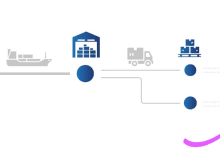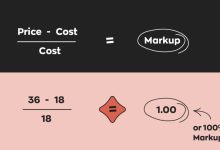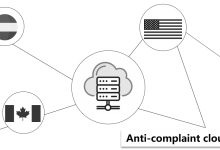Today, we’ll compare two popular open-source platforms used in setting up replica product websites: OpenCart and WordPress.

Developer Perspective
Let’s start by looking at these two frameworks from a developer’s perspective.
WordPress and OpenCart are both open-source systems developed in PHP, and they are under continuous development. Their official teams and developer communities are highly active and regularly contribute updates and improvements.
Let’s begin with an introduction to the WordPress framework.
WordPress is a PHP + MySQL-based development framework. It is a highly compatible CMS and blogging system that is widely used in website building around the world. Originally designed as a blogging platform, WordPress’s purpose is clearly reflected in its official database structure, which shows its blog-oriented architecture at a glance.

From the database structure above, we can see that the native WordPress system contains only a small number of tables—such as those for comments, posts, and users. It is highly streamlined and structurally simple. However, thanks to WordPress’s excellent compatibility and its large, active development community, the WordPress ecosystem has grown rapidly. In theory, any type of website can be built using WordPress.
For replica product e-commerce websites, a common setup is to use WordPress combined with the WooCommerce plugin—a “framework + plugin” approach to power the entire online store. In this configuration, the database structure is significantly expanded to accommodate e-commerce functionality.

As you can see, after installing the WooCommerce plugin and adding a theme, the number of database tables increases dramatically—expanding to several dozen. All core e-commerce functions are driven by this single plugin, including product management, shopping cart, checkout, marketing tools, orders, and more.
Now let’s take a look at the OpenCart framework.
OpenCart is one of the world’s most renowned open-source e-commerce platforms. Its most notable feature for secondary development is its use of the MVC (Model–View–Controller) architecture.

What is the MVC architecture?
Anyone with software development experience would know that MVC stands for Model–View–Controller. The purpose of using MVC is to separate the implementation of the Model (M) and the View (V), so that a single application can support different presentation formats with high reusability. The biggest advantage of the MVC structure lies in its extensibility and ease of secondary development.
This is why OpenCart has a very clean and well-organized codebase. It adopts a fully responsive front-end built with HTML5 + CSS3, with layered presentation and high efficiency.
OpenCart was originally designed specifically for e-commerce systems. It comes fully equipped with robust and mature features like multi-language support, multi-currency support, product and order management, shopping cart, and marketing tools. It is also easy to maintain and extend.
Ecosystem Perspective
Next, let’s compare the two frameworks from an ecosystem and community perspective.
WordPress has a highly mature ecosystem of plugins and themes. Many developer communities have conducted extensive secondary development based on the original framework. For example, the well-known marketplace ThemeForest (themeforest.net) offers a vast collection of high-quality and beautifully designed themes for WordPress.

In addition to its wide selection of beautifully designed themes, WordPress also offers an incredibly rich library of plugins.

The highly developed marketplace for themes and plugins makes the WordPress framework incredibly powerful and flexible. In theory, you can build virtually any type of website using WordPress.
In contrast, OpenCart has a more limited scope, as it focuses solely on e-commerce scenarios. As a result, its ecosystem is not as rich as that of WordPress. However, the official OpenCart marketplace still offers a decent range of extensions, including themes, language packs, plugins, payment gateways, shipping modules, order tools, reporting tools, and more — as shown below:

Several other developer communities also offer a considerable number of extensions. For example, the well-known JOURNAL and PAV themes are widely used. These themes follow clean coding standards and utilize efficient, fully responsive HTML5 + CSS3 designs, making them perform exceptionally well in e-commerce scenarios.
Which framework is best for replica sites?
If you want to build a content-focused website—such as a personal blog, company site, or forum—WordPress is definitely the best choice. WordPress was “born for blogging” and its SEO structure is highly optimized, making it very search engine friendly. For example, our official website (replicasmaster.com) is built on WordPress.
If you want to build an e-commerce shopping site, such as a branded store, OpenCart is a better option. OpenCart is specialized for online stores, with superior framework performance and better shopping conversion precision.
From years of experience and comparison in building replica product websites, I personally recommend OpenCart. After multiple rounds of testing, with the same server setup, audience traffic, products, and prices, OpenCart consistently outperforms WordPress in order conversion and volume.
Especially in terms of responsiveness, WordPress suffers because all e-commerce functions are integrated into a single WooCommerce plugin, which feels like “using a USB drive to run an entire operating system.” As more plugins are added, the site becomes bloated and slow, significantly impacting conversion rates.
For example, when opening a WordPress store with a relatively large number of products, CPU and memory usage spikes within seconds.

Likewise, on the same server, when I open an OpenCart store of the same scale…

On the same server, when I run an OpenCart store of similar scale, CPU and memory usage remain much more stable.
This is exactly why OpenCart consistently outperforms WordPress in terms of e-commerce performance.
When a system struggles with concurrent performance, it directly affects the conversion rate. If your traffic comes in bursts—such as from live streaming, KOL promotions, or paid ad campaigns—the bloated structure of WordPress can easily lead to missed orders and high bounce rates.
Some may argue: “Why not just upgrade the server?” In theory, that works. But it’s only a temporary fix.
First, it significantly increases hosting costs.
Second, the limitations of the WordPress framework itself will still hold you back in high-concurrency environments.
While WordPress is certainly easier to get started with, from my long-term experience in the business, I strongly recommend using OpenCart for replica product websites. Of course, this is just my personal opinion and should be taken as a reference. You should always choose based on your own project needs and conditions.
Additionally, to meet the diverse needs of our clients, we offer two versions of replica website development:
WordPress + WooCommerce and OpenCart.
Both versions are fully supported and receive ongoing updates to ensure long-term stability and performance.
In the end, the choice of framework should be based on your actual business needs.
There is no absolute “better” between WordPress and OpenCart—each excels in different areas.
The most important thing is to choose the platform that best fits your specific use case.
 Custom E-commerce Solutions for High-Quality Designer-Inspired Fashion Replicas | Website Development, Dropshipping, Payment Integration for PayPal and Stripe, Ad Cloaking Services
Custom E-commerce Solutions for High-Quality Designer-Inspired Fashion Replicas | Website Development, Dropshipping, Payment Integration for PayPal and Stripe, Ad Cloaking Services






![5 Best WordPress Themes for Replica Product International Trade Websites [Recommended]-Custom E-commerce Solutions for High-Quality Designer-Inspired Fashion Replicas | Website Development, Dropshipping, Payment Integration for PayPal and Stripe, Ad Cloaking Services](https://replicasmaster.com/wp-content/uploads/2025/06/1-1-220x150.jpg)


















